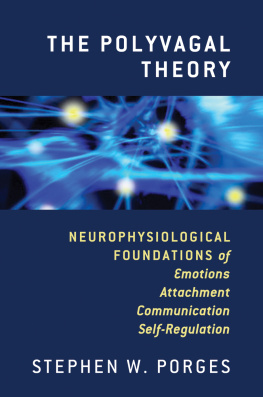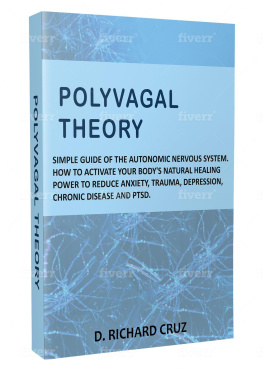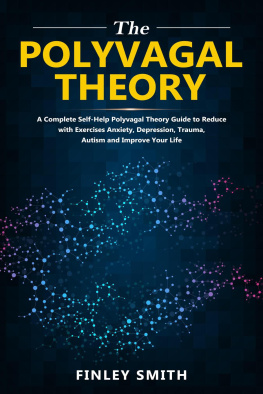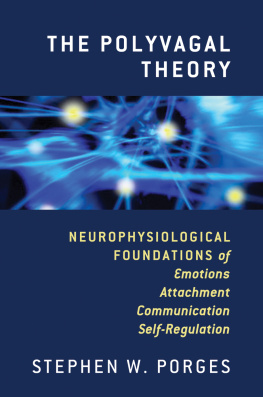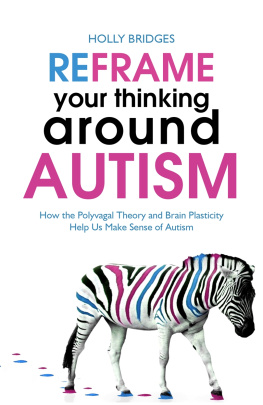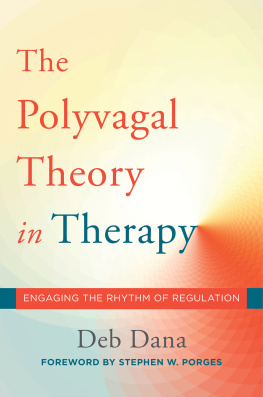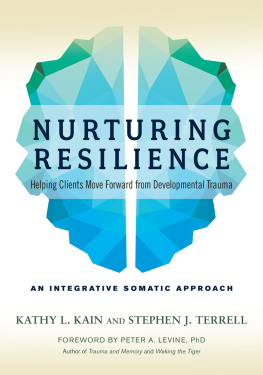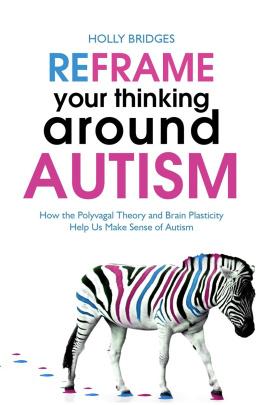
The Polyvagal Theory is at the leading edge of psychosomatic medicine and body-mind therapies. It is a vital contribution to scientifically-informed clinical practice. Psychologists, analysts, physicians, bodyworkers, and educators are provided with an essential map to help guide them in tracking the psychophysiological states of their clients, discern where they are stuck, and help them to heal and move forward in life. Dr. Porgess great contribution is now compiled in this one astounding comprehensive volume. It is a must-read for clinicians and psychobiological researchers.Peter A. Levine, PhD, author of In Unspoken Voice; How the Body Releases Trauma and Restores Goodness and Trauma Through a Childs Eyes: Awakening the Ordinary Miracle of Healing.
Stephen Porges has developed theories of the autonomic nervous system, based on his sound research over many years, which have profound importance for our understanding of human behavior, whether normal or pathological. Based on evolutionary principles, and firmly embedded in neuroanatomy, his work considerably broadens our understanding of the representation of emotion in the brain, reaching parts that most contemporary texts never touch.Michael Trimble, MD, author of The Soul in the Brain: The Cerebral Basis of Language, Art, and Belief.
The Norton Series on Interpersonal Neurobiology
Allan N. Schore, PhD, Series Editor
Daniel J. Siegel, MD, Founding Editor
The field of mental health is in a tremendously exciting period of growth and conceptual reorganization. Independent findings from a variety of scientific endeavors are converging in an interdisciplinary view of the mind and mental well-being. An interpersonal neurobiology of human development enables us to understand that the structure and function of the mind and brain are shaped by experiences, especially those involving emotional relationships.
The Norton Series on Interpersonal Neurobiology will provide cutting-edge, multidisciplinary views that further our understanding of the complex neurobiology of the human mind. By drawing on a wide range of traditionally independent fields of researchsuch as neurobiology, genetics, memory, attachment, complex systems, anthropology, and evolutionary psychologythese texts will offer mental health professionals a review and synthesis of scientific findings often inaccessible to clinicians. These books aim to advance our understanding of human experience by finding the unity of knowledge, or consilience, that emerges with the translation of findings from numerous domains of study into a common language and conceptual framework. The series will integrate the best of modern science with the healing art of psychotherapy.
The Polyvagal Theory
Neurophysiological Foundations
of Emotions, Attachment,
Communication, and Self-Regulation
STEPHEN W. PORGES

With love and respect
I dedicate this book to Sue Carter,
my wife and intellectual partner.

Contents

It is an extraordinary experience to hear a new piece of music or a novel scientific idea that makes you sit up in wonder and turns on a bank of lights in your mind that permanently transforms how you understand what life is all about. Seeing Peter Sellerss production of the Marriage of Figaro , listening to Elisabeth Kbler-Ross lecture on schizophrenia when I was a medical student, and hearing Steve Maier talk about the neurobiology of inescapable shock at the American College of Neuropsychopharmacology in 1984 were three such unforgettable events for me.
On the morning of May 21, 1999, we had the most memorable series of lectures of the 22 years that I have run the annual Boston trauma conference. The day opened with Bruce McEwen talking about stress and the hippocampus. He introduced the notion of neuroplasticity and showed that Ramon-y-Cahals dire dictum that anatomy is destinythat the neuronal connections in the brain are immutably fixedwas incorrect. Jaak Panksepp, whose work has delineated the brain circuits that underlie nurturance, fear, rage, and rough and tumble play, was next. The final speaker that morning was Stephen Porges, who talked about the polyvagal theory of emotions. That lecture caused a fundamental shift in how I and many of my colleagues understand the work we do.
Clinicians and researchers who deal with people with histories of chronic trauma are routinely confronted with fight, flight, or freeze reactions. Our patients (and occasionally colleagues) easily take offense, and they often disorganize their (and our) lives by becoming too angry, too ashamed, and too frozen. Minor irritations easily turn into catastrophes; small failures of communication are difficult to gloss over and easily turn into dramatic interpersonal conflicts. The milk of human kindness, such an essential nutrient in making life bearable, all too often fails to have a significant impact on the despair, rage, and terror of people with histories of trauma and abandonment.
When post-traumatic stress disorder (PTSD) first made it into the diagnostic manuals, we only focused on dramatic incidents like rapes, assaults, or accidents to explain the origins of the emotional breakdowns in our patients. Gradually, we came to understand that the most severe dysregulation occurred in people who, as children, lacked a consistent caregiver. Emotional abuse, loss of caregivers, inconsistency, and chronic misattunement showed up as the principal contributors to a large variety of psychiatric problems (Dozier, Stovall, & Albus, 1999; Pianta, Egeland, & Adam, 1996). One of the most important discoveries in psychology, neuroscience, and psychiatry has been that failure in establishing secure early attachment bonds leads to a diminished capacity to regulate negative emotions. Harlow and his students were the first to show the devastating effects of abandonment and loss on affect regulation in nonhuman primates. Half a century of attachment research has shown that people learn to regulate their emotional arousal largely as a function of the capacity to establish physical and rhythmical attunement with important figures in their early caretaking environment (Trevarthen, 1999). Attachment researchers, starting with John Bowlby, have long shown that the internal regulatory processes of an individual reflect to a large degree the attunement with external sources of regulation early in life (Bowlby, 1973, 1982; Cloitre, Stovall-McClough, Zorbas, & Charuvastra, 2008; Hofer, 2006).
Having a history of chronic misattunement with ones caregivers predisposes people to have difficulties managing negative emotions later in life (Dozier et al., 1999). Sadly, deficient affect regulation caused by early adverse experiences is compounded by the resulting off-putting behaviors in the face of stress, such as temper tantrums and emotional withdrawal (Shaver & Mikulincer, 2002). Dysregulated behavior alienates potential friends and partners and interferes with being able to garner support and accumulate restorative experiences. Lack of affect regulation thus runs the danger of becoming a vicious circle, where deficient self-control leads to abandonment, which in turn makes it even more difficult to regulate negative mood states.
The problem does not end there, since routine psychiatric interventions are quite ineffective in helping people manage their emotions (Cloitre, Stovall-McClough, Miranda, & Chemtob, 2004), and the best that medications generally can do is to dull emotional arousal of any kind, thereby robbing people of pleasure and of pain simultaneously. Traditional psychotherapies also do not offer much immediate relief, since being unable to manage emotional arousal interferes with being able to benefit from treatments such as cognitive behavioral therapy (Jaycox, Foa, & Morral, 1998).
Next page
